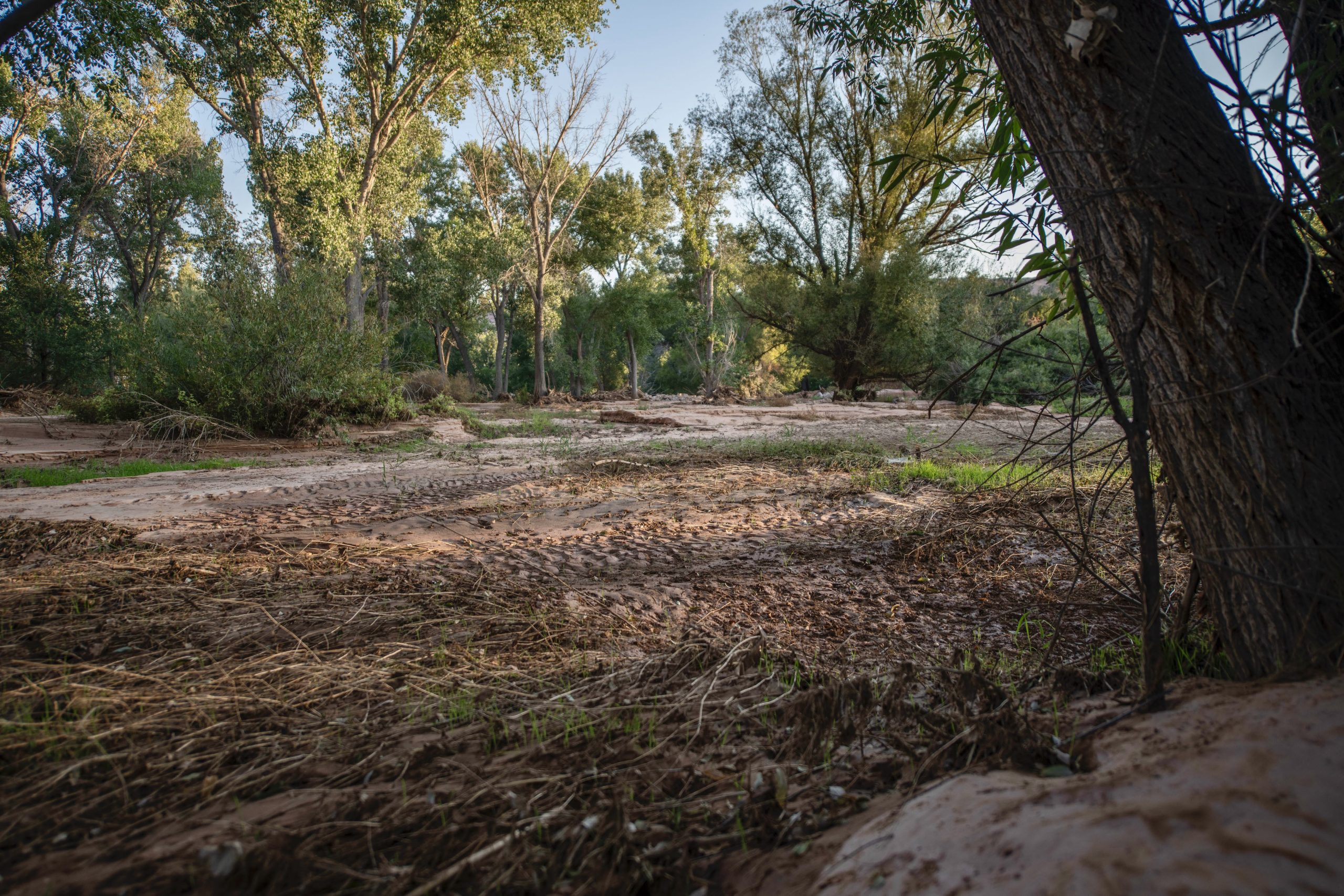Some information may be outdated.
Rim to Rim Restoration founder Kara Dohrenwend attended the regular city council meeting on March 14 to present Rim to Rim’s regeneration and planning efforts along the Mill Creek corridor, as the nonprofit is under contract with the city to conduct the work.
For years, Rim to Rim has worked to remove invasive Russian olive and tamarisk plants from Mill Creek and revegetate those areas, collaborating with over 100 landowners to do so.
The massive monsoon season last year, which caused Mill Creek to flood multiple times, allowed Dohrenwend to test how the restoration areas held up against areas that hadn’t had invasive plants removed.
Areas where invasive plants were removed had less damage after the floods compared to areas still choked by Russian olive and tamarisk. Those two plants create “debris dams,” narrowing the flood path and forcing water higher and faster, instead of allowing it to spread out and slow down, Dohrenwend said. Removing invasive plants remains a priority then, both for flood protection and to remove potential wildfire fuel.
Rim to Rim is looking into how the restoration work could become more collaborative: Dohrenwend said she’s reached out to and interviewed “18 individuals or entities with interests in management of drainage and riparian corridors in Moab and Spanish Valley,” including City Engineer Chuck Williams; Parks, Trails, and Recreation Director Annie McVay; Grand County Active Transportation and Trails Director Maddie Logowitz; and John Weisheit, member of the Canyonlands Watershed Council.
“I observed a few things based on those interviews, and one is that almost 100% of the people I talked with said flood is one of their top concerns when I asked them about the thing that keeps them awake at night, if anything, related to the creeks,” Dohrenwend said. “Flood and fire were the two things.”
Also notable, Dohrenwend said, was that few entities and individuals were aware of other entities’ plans and needs. Collaboration, therefore, seems essential, but it’ll need to be flexible and adaptable, she said, and creek restoration efforts should include community members.
“None of this is earth-shattering news, but it is reassuring to know, as I’ve talked through this with people, that there is some common thinking,” she said. Rim to Rim will continue its restoration work, and return back to the council with a concrete plan to move forward in collaboration efforts.
Appreciate the coverage? Help keep local news alive.
Chip in to support the Moab Sun News.





